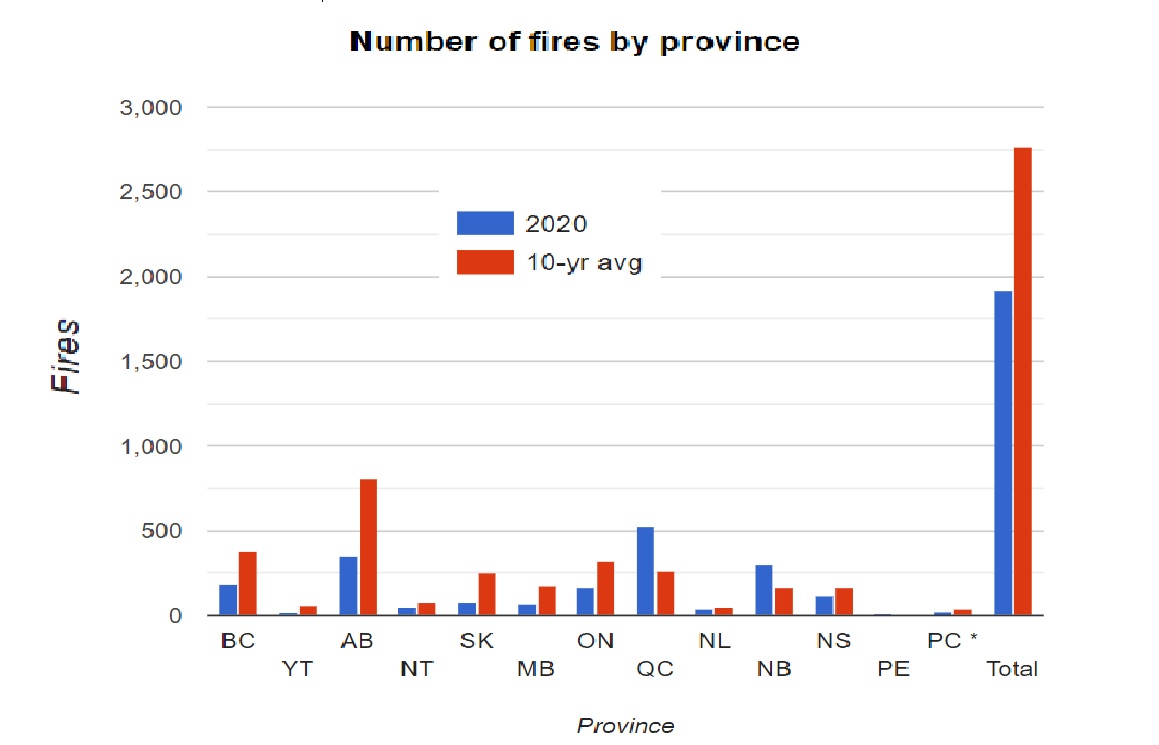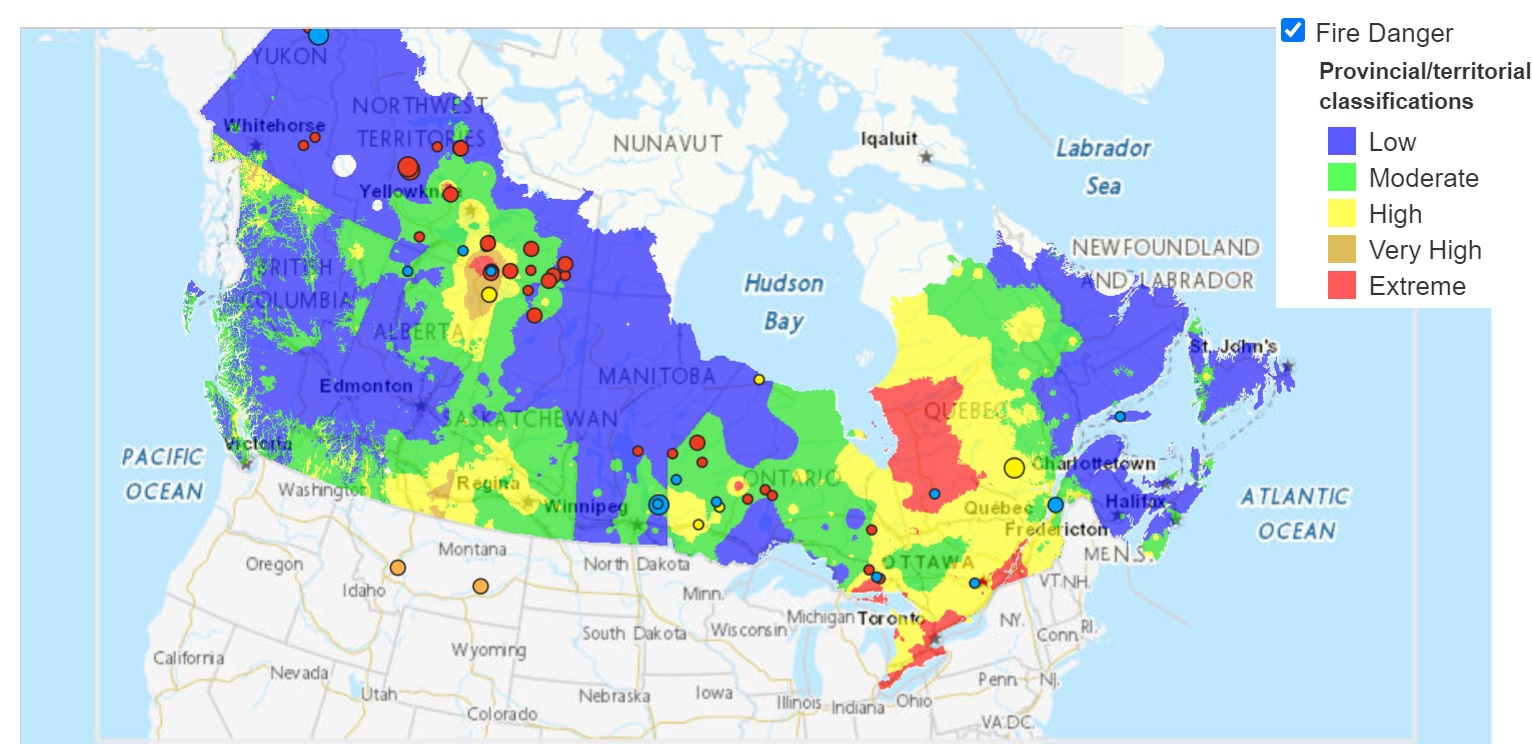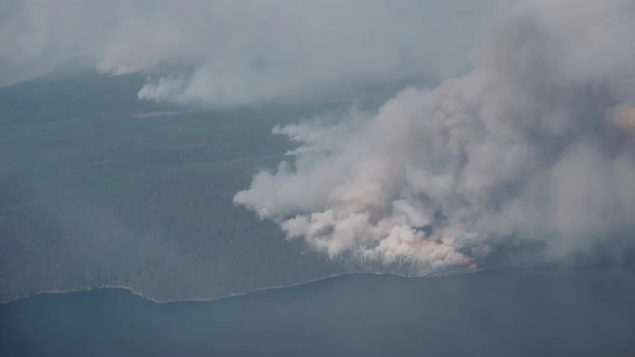Imagine a wildfire bigger than the island of Montreal, or say bigger than the Isle of Man, or Guam, or Ibiza. Canada’s central province of Quebec has been subjected to a couple of weeks of extreme heat and that’s meant wildfires have been raging in the province’s forests.
At this early stage in the fire season already over 61,200 hectares of forest has burned (612 sq.km) in over 540 fires. This is double the average for this time of year and the worst year for fires in over a decade in the province. The biggest fire by far is one north of the Saguenay -Lac St Jean region, a popular vacation and cottage area. That fire of over 59,000 hectares was believed to have been caused by a campfire.
Fire fighting crews have been called in from neighbouring Ontario and even from the western province of Manitoba to help control the fire. They are aided by 17 water bomber planes and about 40 helicopters.

This graph shows that so far this year most areas of Canada are experiencing fewer wildfires than usual, although New Brunswick and especially Quebec are much higher than average. (NR-Can)
The hot dry weather of the past few weeks in the province of Quebec and parts of New Brunswick have resulted in the much higher than average number and size of wildfires.
In western Canada however, the story is much different. A cooler and damp beginning to summer through May and June in west coast British Columbia has meant wildfires to date in that province are about half of the usual average. This fire situation has been helped by periodic rain across the province which has helped to prevent forests and grasses from drying out.
As of June 29, there had been 181 wildfires versus the average by that date of 287.

Red circles indicate fires out of control,: Yellow circles mean fires being held, Blue circles mean under control, Size of circles indicate size of fires (CWFIS-NRCAN)
However, B.C. fire information officer Cathy L’Orsa was quoted by the CBC saying, “It is important to remember that fire hazard and fire behaviour are really driven by short-term weather and that a few weeks or even days with hot, dry conditions can drastically change a fire’s ability to start and to grow,”
additional information-sources







For reasons beyond our control, and for an undetermined period of time, our comment section is now closed. However, our social networks remain open to your contributions.